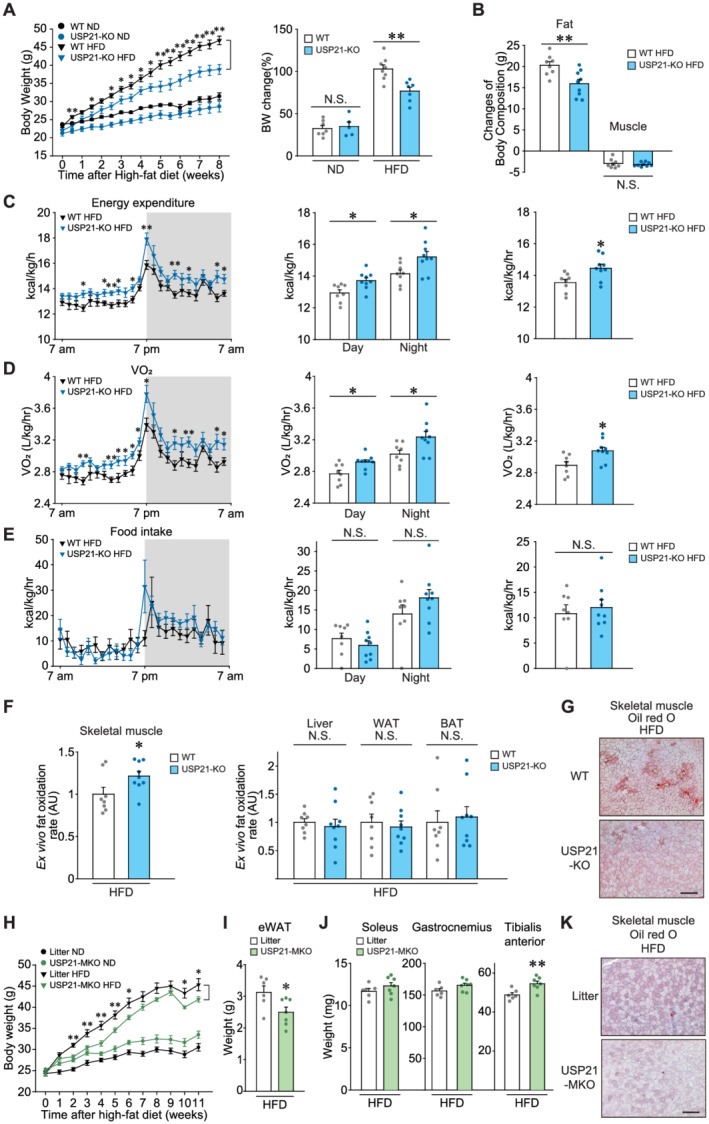Figure 5.

USP21 ablation increases energy expenditure, protecting mice from diet‐induced obesity. (A,B) WT or USP21‐KO mice fed a normal diet (ND) or a high‐fat diet (HFD). (A) BW gains and per cent changes (8 weeks HFD‐fed, n = 5–8/group). (B) Fat and lean muscle mass changes before and after 7 weeks of HFD‐feeding as assessed using nuclear magnetic resonance (n = 8, 9 each). (C–E) In vivo energy balance. Energy expenditure (C), maximal oxygen consumption (VO2) (D), and food intake (E) were analysed in mice housed in individual metabolic cages for 24 h (7 weeks HFD‐fed, n = 8, 9 each). (F) Ex vivo FA oxidation assays in soleus muscle, liver, WAT, and BAT of indicated genotype (11 weeks HFD‐fed, n = 8, 9 each). Tissues quickly isolated from mice of indicated genotypes were incubated in a medium containing [14C]‐oleic acid for 60 min (soleus muscle and WAT) or 30 min (liver and BAT), and the released 14CO2 was lysed for scintillation counting. AU, arbitrary unit. (G) Oil red O staining of tibialis anterior muscle (n = 5, 9 each). Scale bar: 200 μm. (H–K) Litter or USP21‐MKO mice fed an ND (n = 6 each) or an HFD (n = 6, 7 each) for 11 weeks. After HFD feeding, the mice were fasted overnight and then sacrificed. (H) BW gains. (I) Epididymal fat (eWAT) weights. (J) Skeletal muscle weights. (K) Oil red O staining of tibialis anterior muscle (n = 3 each). Values are expressed as means ± standard error of the mean (SEM). *P < 0.05, **P < 0.01, by Student's t test (A–F,H–J). N.S., not significant.
